- Interactive Map
GNB menu Open Search box Show
- Visit KOREA Instagram
- Visit KOREA Twitter
- Visit KOREA Facebook
- Visit KOREA Youtube
Interactive Map GNB menu Open Search box Show

Weather 06-05-2024
Seoul/Gyeonggi-do/Incheon
Temperatures
Exchange Rates Travel Calendar
Sign in as a member
Link one of the following accounts to sign in as a VisitKorea member
Notice on Gathering Information
Done Cancel
Enter your personal information from the list below.
Field of Interest
※Pick at least three fields of interest.
- Accommodations
- Transportation
- History / Tradition
- Urban travel
- Festivals / Performances / Events
- Leisure / Sports
- Entertainment / Arts
- Theme parks
Demilitarized Zone (DMZ) Tours
Dmz peace train.
- Regional DMZ Attractions
Home Attractions Themed Travel Demilitarized Zone (DMZ) Tours DMZ Peace Train
* Attractions and trains subject to closure due to COVID-19, please check ahead before visiting.
The Demilitarized Zone (DMZ) is a weapons-free buffer zone between North and South Korea. The area was established on July 27, 1953 when the Armistice Agreement was signed during the Korean War, and includes a 2 kilometer-wide stretch of land on both north and south of the line. The DMZ extends largely from Gyeonggi-do to Gangwon-do, including seven different cities and smaller counties of Paju, Yeoncheon, Cheorwon, Hwacheon, Yanggu, Inje and Goseong. The zone has been protected from human disturbance for more than 6 decades and has unintentionally become a haven for wildlife, making it a popular destination for nature lovers.
DMZ Travel Tip Many places are located beyond the Civilian Control Line, and therefore are not open to individual tourists. To enjoy the DMZ comfortably, sign up for a travel package such as the DMZ Peace Train , operated by KORAIL. Panmunjeom is only open to visitors traveling with approved tour agencies. More importantly, visitors are required to bring a legitimate form of identification and/or passport when going to the DMZ. Tourists are additionally reminded that photography is highly restricted, so please check before taking photographs.
The DMZ Peace Train is a tourist train operated by KORAIL departing from Seoul to the DMZ. The train runs in three courses, including the Dorasan Security Tour, Yeoncheon Dreaming Tour, and Cheorwon Security Tour. Each tour package is a round-trip, one-day tour.
Dorasan Security Tour
- dorasan station link.
Dorasan Station is one of the northernmost railway stations on the Gyeongui Line, connecting Seoul to Sinuiju. The station was visited by previous Korean President Kim Daejung and previous American President George W. Bush. The station has become a symbol of effort for a unified Korea.
- Dorasan Peace Park
Dorasan Peace Park is an ecological park featuring a pond in the shape of the Korean peninsula with a boardwalk around it. The park’s exhibition hall showcases information and materials related to the history of Dorasan Station and DMZ’s ecosystem.
- Dora Observatory LINK
Dora Observatory is the northernmost observatory on the western section of the DMZ. The binoculars offer views of the city of Gaeseong, Songaksan Mountain, and the Statue of Kim Il-sung in North Korea. The area just beyond the observatory is within a military outpost command, so photography is strictly prohibited here. In addition, the observatory is located within the Civilian Control Line, so visitors must join the Dorasan Security Tour to visit.
- The 3rd Tunnel LINK
Discovered in 1978, the third infiltration tunnel was dug by the Northern army to spy on their Southern counterparts. The tunnel is 1,635 meters long, with a height and width of 2 meters. It is estimated that over 30,000 soldiers would have been able to pass through the tunnel in just one hour. It is now an all-inclusive tourist attraction, with a DMZ video hall, symbolic sculptures, gift shops and more.
- Operating days: Wednesday-Sunday, once a day / No trains Monday-Tuesday
- Tour schedule: Depart from Yongsan Station (10:08) – Seoul Station (10:15) – Arrive at Imjingang Station (11:24) – Complete identity check (11:32) – Arrive at Dorasan Station and board connecting bus (11:43) – Dorasan Peace Park (12:10) – Lunch break at Tongilchon (Unification Village) (13:00) - Dora Observatory (14:00) - The 3rd Tunnel (14:40) – Tour Unification Platform (15:50) - Depart from Dorasan Station (16:27) – Seoul Station (17:47) – Arrive at Yongsan Station (17:54)
- Fares: Adults & Teenagers 36,000 won / Children 33,000 won / Senior citizens 34,000 won * Adults & Teenagers (ages 13-64) / Children (ages 12 & younger) / Senior citizens (ages 65 & older) * Listed fares are based on Yongsan Station departure
- Reservations - Online: www.korailtravel.com/web/goods_view (Korean only) - On-site: Tour package is available from the KORAIL Travel Center at each departure station - Foreigners can purchase train tickets from Yongsan Station to Dorasan Station online, but will have to register for the Dorasan Security Tour at Dorasan Station if they wish to travel further.
- Website: www.letskorail.com (Korean, English, Japanese, Chinese)
- Websites - Paju-si Culture & Tourism: tour.paju.go.kr (Korean, English, Japanese, Chinese) - Gyeonggi-do DMZ: dmz.gg.go.kr (Korean, English, Japanese, Chinese, Vietnamese)
This page was last updated on May 27, 2021, and therefore information may differ from what is presented here. We advise you to check details before visiting.

How to choose the best DMZ Tour (2024 edition)
By: Author Sylvia
Posted on Last updated: January 22, 2024
Are you wondering what’s the best DMZ tour?
When we visited Korea for the first time, we absolutely wanted to visit the DMZ.
We did tremendous research about the best way to visit the DMZ and the best DMZ tour.
What we didn’t know at that time was that the inter-Korean summit would sabotage our plans.
Our DMZ tour was canceled because of the meeting between the North Korean leader Kim Jong-un and South Korea’s President Moon Jae-in.
Covid-19 threw a wrench in the works of our second trip to Korea, but in 2023, the moment finally arrived! We could again travel to Korea, and this time our visit to the DMZ, became a reality. Hooray!
The visit to the DMZ is slightly different after Covid than it used to be. We share all the latest details.
Here’s everything we learned from our extensive research and from our visit in 2023.
There is a really good chance that this post contains affiliate links. If you click one of them, we may receive a small commission (for which we are deeply grateful) at no extra cost to you.
In a hurry? Here you will find the most important information about the DMZ
The DMZ is an interesting place to visit and a perfect way to learn more about Korean history and the current situation of separation between North and South Korea.
- The cheapest way to visit the DMZ is with the DMZ peace train . (The train has stopped running due to COVID-19 and service has not yet resumed at this time. )
DMZ half or full-day trip
- DMZ half or full-day trip ( is slightly cheaper than the one above, but at the moment only runs on Saturday or Sunday )
- DMZ Tour with Optional North Korean Defector
- If you are traveling with a larger family or a group, you could consider a private tour with a guide
- After 2 years of being closed, the JSA is finally reopening. Note that JSA Tours are very popular and are quickly booked up. If you want to visit the JSA you should book your tour as soon as your travel plans are fixed. Read on to learn the difference between the DMZ and the JSA .
Table of Contents
What’s the DMZ
In order to completely understand what the DMZ is all about we will start with some history.
The complete Korean peninsula on which both North and South Korea are currently located was annexed by Japan in 1910. The Japanese treated Korea as a colony. The interests of the Koreans were completely subordinate to the interests of Japan.
Japan was defeated by the Allies at the end of the second world war in 1945. At that time the Soviet Union had occupied the Northern part of Korea and the United States took control of the Southern part of the Peninsula.
7 days in Korea, the perfect itinerary.
The intention of the two superpowers was to create a temporary separation between the 2 parts. Plans existed to create a united and independent Korea in 5 years but things turned out differently.
The Cold War ensured that there was no agreement to hold elections for the whole of Korea.
The differences in politics drove the 2 parts further apart instead of coming to each other.
In 1948 the independent Republic of Korea was established in the American zone. In the same year, the Communist Democratic Korean People’s Republic (North Korea) was founded in the north.
Two years later the Northern army invaded the South with the aim of uniting the two Koreas into one communist state. This was the start of a 3-year-long civil war that claimed more than 2 million victims.
Initially, the Northern army succeeded in overrunning 90% of the South but they were fought back by US-led reinforcements sent by the UN.
In their turn, they crossed the border and made plans to conquer the whole North, against the will of China that launched a counter-attack.

It took until July 27, 1953, before the Armistice Agreement was signed.
The two parties took long to negotiate where the new border should be but in the end, it was decided that the border remained more or less where it had been all the time.
The new border diagonally crosses the 38th latitude and was widened with the creation of a four-kilometer-wide weapons-free buffer zone between the states, known as the DMZ.
The war left its traces and further perpetuated the division of Korea leading to a permanent alliance between South Korea and the United States and the establishment of a US base in South Korea.
There has been a truce since then but o fficially the 2 countries are still at war with each other. We read about how you can literally feel the tension at the border where the armies of both countries are facing each other.
In other parts of South Korea, such as Busan , you do not notice much of the war except that foreign navigation systems, such as Google Maps, do not work because South Korea requires that all mapping data is stored locally. The government also enforces that military bases are removed from maps. Apparently, Google couldn’t promise to obey to all these rules.
In 2018 both countries have done a considerable effort to ease their relations. At the Korean summit in May 2018, they vowed to officially end the war within a year.
Since then several other meetings have taken place between both parties as well as a historic meeting between President Trump and Kim Jong-un in June. That was the first time that the sitting leaders of these countries spoke in person.
We are now well past this deadline and nothing has come of it. Relations between the two countries have even deteriorated again.
It would be great news if Korea would finally be reunited but at this point, it doesn’t seem like this will happen anytime soon.
Over time the DMZ will hopefully transition into a more amicable place but nothing has changed for the time being.
It may be one of the world’s most heavily militarized borders but it’s also one of the most visited tourist attractions in Korea. The DMZ welcomes more than 1.2 million foreign travelers each year, according to the Korea Tourism Organization.
Why visit the DMZ
The guided tours are very educational and some tours have a North Korean defector as a tour guide who can give you more insight into how life is on the other side of the border.
It is at this point one of the few still active remnants of the cold war and that makes it extra special.
Americans and South Koreans are not allowed to travel into North Korea, for them this will be the closest they can get to this isolated country. And despite the fact that other nationalities are allowed to travel to the country, there are not many who do it.
The DMZ is described as one of the most volatile regions in the world and it is a border post that has torn thousands of families apart and still holds them hostage in their “new” country.
It feels strange that at the same time it is one of the top tourist attractions in this country.
We wondered if we would not feel guilty that we as a tourist came to look at a place that is the source of so much misery for other people.
What convinced us is that we believe that, by showing this to people, hopefully, the following generations will learn from the mistakes of the past.
What is the difference between the DMZ and the JSA
With regard to the tours, there is a distinction between the DMZ and the JSA tours in Korea.
JSA refers to the Joint Security Area , this is as close as you can get to North Korea.
The JSA is what most people probably think about when they think about the Korean border. This is the area with the blue barracks that are used for all the negotiations between the North and the South.

This is an iconic picture of the JSA but things may be different today. One of the first things that North and South Korea agreed upon was to clear the JSA of all weapons and military. This disarmament was completed in October 2018.
The good news is that they also decided to preserve the JSA in its current state.
Later on, in this article, we discuss in more depth the different points of interest that DMZ and JSA DMZ tours cover.
Who can visit the DMZ?
Everybody can join the DMZ tours but at this point, certain restrictions are still in place regarding the JSA.
Since the JSA has been disarmed the expectation is that these restrictions will disappear in the near future.
Until that is a fact, these nationalities can visit the JSA but will need to provide a scan of their passport at the time of booking a tour. Albania – Afghanistan – Algeria – Azerbaijan – Bangladesh – Bahrain – Belarus – China – Cuba – Egypt – Estonia – Georgia – Hong Kong – Iran – Iraq – India – Indonesia – Jordan – Kazakhstan – Kuwait – Kyrgyzstan – Latvia – Lebanon – Libya – Lithuania – Malaysia – Morocco – Moldova – Nigeria – North Korea – Oman – Pakistan – Qatar – Russia – Saudi Arabia – Somalia – Sudan – Syria – Taiwan – Tajikistan – Turkmenistan – Tunisia – Ukraine – United Arab Emirates – Uzbekistan – Vietnam – Yemen Visitors with European, American, or Australian nationality do not have any restrictions when visiting the JSA.
Children must be accompanied by their parents for both the JSA as well as the DMZ tours.
Some tour companies require that children are at least 10 years old before they can participate in a JSA tour. If you’re planning on doing a DMZ or DMZ/JSA tour with small children we recommend that you check with the tour company.
Things to know when visiting the DMZ
Opening hours.
The DMZ tours don’t run on Mondays and Korean holidays ( except Korea’s New Year and Thanksgiving Day).
If the Korean holiday happens to be during a weekend, there is a chance that the DMZ tours will run anyway.
We cover an alternative DMZ tour that you can do if your only chance is to visit the DMZ would be a Monday. More about this tour later.
Things you should bring
A current valid passport is required for both the DMZ as well as JSA DMZ tour.
You have to take your passport with you.
Without your passport, you won’t be allowed to join the tour.
A dress code applies when visiting the JSA.
The dress code is expected to disappear now that the disarmament of the JSA is a fact but for the time being, we would advise you to stick to the dress code or to check with your tour operator to confirm what you will be wearing is OK.
This is the dress code:
- Skirts/dresses need to be at least knee length
- No sandals, flip-flops,s or slippers
- No t-shirts: must be collared shirts
- Civilian clothes preferred
- Jeans accepted with no holes (no ripped jeans)
- No tank tops
- No exercise clothes
- No clothing with militarily styled prints
- No stretch pants/tights
The reason that the dress code is in place has nothing to do with security as most would think.
The dress code came after it appeared that North Korea used photos of “sloppy” dressed foreigners to use them in their propaganda. The North Korean government used the photos to showcase the poor state of the other countries.
For this same reason, it is not allowed to wave to the North Korean guards. Images of foreigners waving to North Korean guards have been used in propaganda and have been framed as people who wanted to defect to the communist state.
Codes of conduct
There is still a strict code of conduct in place as we write this article. You mustn’t wave, point, or in any other way signal to the North Korean guards.
Photos are also not allowed everywhere. The guides will tell you what you can and cannot take pictures of. (eg. it is not allowed to take pictures inside the 3rd infiltration tunnel)
When you tour the JSA you must at all times stay with your guide and the military escorts and comply with all the instructions given by your guide and the military.
The disarmament will result in a more relaxed code of conduct in the future.
Most interesting points of interest
The most interesting sights are the Joint Security Area, the Freedom Bridge, the Infiltration Tunnels, and the Mount Odu Observatory.

The Joint Security Area (JSA)
Located in Panmunjom, the JSA is the closest point a tourist can get to North Korea without getting arrested or shot.
Here you’ll have a chance to physically stand in North Korea. It is also the only spot in the DMZ, where the South and North Korean soldiers face each other.
The JSA area is occupied by the South Korean and US military.
Bill Clinton repeatedly called this border post the scariest place on earth but it is touristy at the same time. There is even a gift shop selling original items from North Korea, including stamps, money, and wine.
A visit to the JSA zone usually starts in Camp Bonifas.
This is a United Nations Command military post that houses the United Nations Command Security Battalion of the Joint Security Area whose primary mission is to monitor and enforce the Korean Armistice Agreement of 1953.
Here you will normally also be given a 20-minute briefing by an American soldier explaining the rules and possible dangers.
There are quite a few rules you should follow so listen carefully. You cannot take any loose items with you, if you bring a coat you have to wear it all the time (you cannot hang it over your arm), you will also have to walk to the actual border in “formation” and have to set up in rows, etc.
At this point, you’ll also be signing a waiver that absolves South Korea, the UN, and the USA in case any incidents will arise. The waiver explicitly states that the visitor’s safety is not guaranteed in the event of unanticipated complications.
A standard formality because in recent years there have been no accidents and these tours are done on a regular basis.

This document also provides more information about photo privileges, specifically when and where you’re allowed to take pictures.
Once everybody has signed the waiver a tour bus brings you to the freedom house.
Here two South Korean soldiers of a special unit stand guard facing soldiers from North Korea. Often there is only one soldier on the side of North Korea.
The JSA is the only part of the DMZ where North and South Korean soldiers are face-to-face. They stare at each other all day long and have been for several years.
A little later you can enter the conference room. This is the actual conference room where the armistice agreement was signed. In this room, you will get the chance to cross the border. The border cuts the conference room in 2 so when you cross the room to the opposite side you’re effectively in North Korean territory.
This concludes your visit to the actual JSA zone, next you get a short tour along a lookout point towards North Korea from where you can see the Propaganda Village.
This is a well-tended village just along the North Korean border that is supposedly housing 200 families, several schools, and a hospital.
Tourists seldom see any movement in the village and it is believed that North Korea only built the town for propaganda purposes. Hence the name South Koreans gave to the town.
You will also visit the location of the Korean ax murder incident. Two American soldiers were killed here by North Koreans while cutting a tree.
Another highlight is the bridge of no return.
This is the bridge where prisoners between the two countries were exchanged after the Korean War.
The name originates from the final ultimatum that was given to prisoners of war brought to the bridge for repatriation: they could either remain in the country of their captivity or cross the bridge to return to their homeland.
However, once they chose to cross the bridge, they would never be allowed to return, even if they later changed their minds.
After 2 years of being closed, the JSA is finally reopening.
Note that JSA Tours are very popular and book out quickly. We therefore recommend that you book as early as possible so that you can choose your desired date.
Check prices and availability: DMZ-JSA Tour

Imjingak Park and the Freedom Bridge
Imjingak Park has an important sentimental and symbolic meaning. This park commemorates families who are separated because of the split between North and South.
The remnants of the Freedom Bridge can be seen from the park. This bridge was long 1 of only 2 bridges that crossed the Imjin River.
It had long served peaceful purposes but its position close to the Korean border made it of crucial importance during the Korean War.
The bridge was destroyed early in the war, making the Imjingang bridge alongside it the only connection to supply the Southern troops fighting in the Northern territory with supplies.
After the peace treaty was signed this bridge was also used to exchange the sick and wounded prisoners.

The Third Tunnel of Aggression
The Third Tunnel of Aggression is one of four known tunnels under the border between North and South Korea.
The tunnels have been dug to make a surprise attack from North Korea on South Korea.
North Korea denies this and claims the tunnels are part of a network of tunnels belonging to a coal mine. This is highly unlikely as coal has never been found in the area.
The Third Tunnel of Aggression is located 44 kilometers from Seoul and was discovered in 1978. It runs underneath the Demilitarized Zone.
The incomplete tunnel is 1,635 meters long, with a height and width of 2 meters. It is estimated that the tunnel would be able to accommodate more than 30,000 soldiers with light weapons per hour.
Today the tunnel has become an all-inclusive tourist attraction, with a DMZ video hall, representative sculptures, gift shops, and more.

The tunnel is located 73 meters below the surface and is accessed through a steep tunnel. It makes for quite a tough climb. For a supplement, you can use the monorail pictured above to enter and exit the tunnel. Check in advance with the tour organizer if he can arrange this if you want to use the monorail.
You can walk a part of the tunnel until the MDL (military demarcation line). The tunnel may feel quite cramped and if you’re claustrophobic you want to skip it.
Pictures are not allowed in the tunnel.

The Dora Observatory
The Dora Observatory is the northernmost Observatory. It is situated on top of Mount Dora.
Here you can catch a rare glimpse of the reclusive North Korean state without setting foot in the country.
You will see the Kijong-dong Propaganda village and, on a clear day, you can see as far as the real city of Kaesong situated about 8km from the DMZ.

Kaesong is the only city that actually changed hands after the Armistice agreement was signed. It used to be under the control of South Korea but is now ruled by the North.
The Kaesong Industrial region that borders the city is because of its proximity to the border a special administrative region where both people from the North and the South are allowed to work.
You can also see the Dorasan train station , a station located only 650 meters from the Korean border.
The railway line used to continue into North Korea all the way to the capital city of Pyongyang.
The tracks are still there and one hopes that in the near future the trains will again operate in between the two current capitals.

The Dorasan Train station
In 2000 North and South Korea made plans for a rail line that connected both capitals.
The line was completed in 2003 but it took until 2007 before the first freight trains started to run across the border. Not for long unfortunately because already in December 2008 North Korea decided unilaterally to again hermetically close the border.
The Dorasan Train station is currently hugely oversized. The DMZ train is the only train that serves the station with exactly one arrival and one departure daily.
But, with a large customs & immigration area, the station is completely ready for the day that the trains will again continue further North. The original intention was to enable passenger transport in the long term. Let’s hope that this will become a reality in the future.
At this point, Dorasan station is more a symbol of the hope for a reunion between South and North Korea than it is an actual functioning train station.
How to visit the DMZ
The DMZ area is located 60 km from Seoul and can be visited with the DMZ train or a private guided or group tour.
The DMZ peace train
DMZ peace train service has not yet resumed post-COVID-19.
The cheapest way to visit the DMZ is with the DMZ peace train .
The DMZ peace train runs from Seoul to Dorasan station from Tuesdays to Sundays. Just before the train reaches Dorasan station it crosses the Imjingang bridge which gives you a good view of the remnants of the Freedom bridge.
Once arriving at Dorasan station, you can hop on a bus to visit the DMZ. The bus will take you to the Dorasan peace park, the Dora observatory and you will visit the Third Tunnel of Aggression.
Pros and cons
- The cheapest way to visit the DMZ. You will have to take cash to pay separately for the bus tour (if you don’t join the bus tour the only other option is to hang around for 5 hours at the train station) as well as for your lunch.
- This tour might be for you if you don’t like group tours. It gives you slightly more freedom although you still will have to join the bus once you arrive at Dorasan station.
- No English is spoken on the bus tour.
- This tour takes a whole day. If you are short on time you better opt for an organized half-day DMZ tour allowing you to explore the rest of Seoul during the remaining afternoon
- You cannot visit the JSA.
- No hotel pick up, you will need to get to the train station on your own expense
Although we’re not fans of organized group tours ourselves we have opted for an organized tour to visit the DMZ and we were happy with our choice afterward.
The first reason is that you have to join a tour anyway if you want to see the sights such as the infiltration tunnel that are located inside the DMZ. Otherwise, you can only visit Imjingak park.
The second reason is that many of the sights, including in Imjingak park, don’t say that much unless you hear the story from the guide.
We haven’t been able to visit the JSA yet, that will be for our next trip. If you want to visit it you also need to book a tour with a guide.
Finally, there isn’t a huge price difference between what you would pay if you went to the DMZ on your own and took a tour there or booked an organized tour from the start.
That’s why our advice would be to have a look at the organized tours before you opt for the train.
“The scariest place on Earth” – Former US President, Bill Clinton, during his visit to the DMZ in 1993.
The best DMZ tours from Seoul
The most comfortable way to visit the DMZ is with an organized DMZ tour from Seoul.
We recommend using GetYourGuide to book your DMZ tour in Korea. One of the advantages of GetYourGuide is that most tours have a flexible cancellation policy. Normally you can cancel up to 24hours before the tour to get a full refund.
Here is an overview of all the tours on GetYourGuide.
You have a choice between half-day and full-day DMZ tours.
All DMZ tours will head to Imjingak Peace Park first where they will buy tickets to enter the DMZ area. Depending on how busy it is, your group will have to wait there until it’s your turn to visit the DMZ region.
Your guide will tell you some stories about the most important things at Imjingak when you arrive.

You can use your free time at Imjingak to see several monuments and other elements that tell stories about the Korean War. One of them is this steam locomotive riddled with bullets. This was the last train to cross the border. It was destroyed by US soldiers so that it could not be used by North Korean troops.
Once it is your turn to visit the sights inside the DMZ area, the Dora Observatory, and the Infiltration tunnel, you will board a bus and visit those things in groups.
Know that the end times of all tours are only indicative. Only a limited number of people are allowed in the DMZ area at a time. Therefore, there is a real chance that your group will have to wait and that your tour will be delayed. We recommend not booking any other activities on the day of your DMZ visit.
Make sure to book your DMZ tour from Seoul well in advance to avoid disappointments, especially JSA tours tend to sell out well in advance.
Which Dmz Korea tour is the best one? Here’s a list of the most recommended and popular tours.
To create this list we looked at the itineraries and the reviews.
This tour visits the DMZ and JSA in 1 day. It is the most complete and popular DMZ tour.
Tours to the JSA zone have only just resumed and availability is currently difficult to find.
Check prices and availability: JSA tour on Viator

- Visit the freedom bridge near Imjingpark and the old steam train
- Learn more about the Korean war by visiting the 3rd infiltration tunnel and the DMZ Exhibition Hall
- See North Korea from the Dora observatory
- Visit the Dora station
They offer both half-day and full-day tours. You can join the half-day tour in the morning or in the afternoon. The morning tour starts at 8 am, the afternoon tour at 11 am.
If you opt for a full-day tour, you will also visit the War Memorial of Korea.
Pickup is included ( see the tour for the exact pickup locations)
- Those who are not interested in the JSA or who are short on time will find that the half-day DMZ tours offer a great alternative. You will see all the highlights of the DMZ and still have a half-day to discover Seoul.
- If you want to visit the War Memorial of Korea, you should opt for the full day tour.
Check prices and availability: DMZ half or full day trip

DMZ half and full-day tour
- Explore the extraordinary Demilitarized Zone that separates North and South Korea
- Get a rare glimpse of North Korea from the Ganghwa Peace Observatory
- Stop by at the Veterans Memorial Park and learn more about the Korean War
- Watch the statues and monuments at Imjingak Park
- See the Bridge of Freedom
There are both half and full-day tours.
Both tours will take you to all the highlights of the DMZ.
In addition, the full-day tour includes an authentic Korean-style lunch (Bibimbap) and a real shooting experience back in Seoul.
Due to COVID-19 measures, the places visited will be Imjingak Park, Bridge of Freedom, 3rd Infiltration Tunnel, Dora Observatory, and Dorasan Station.
Note that at the moment this tour only runs on Saturday and Sunday.
- If you aren’t interested in the JSA or short on time will find that the half-day DMZ tours offer a great alternative.
- The Ganghwa Peace Observatory is a great alternative for those that are looking to visit a less touristic area of the DMZ.
- If you add up all the costs of the train excursion, the difference between these half-day excursions is negligible.
Check prices and availability: DMZ half and full day

DMZ Tour with a North Korean Defector
- Listen to enlightening commentary from a professional guide and a real North Korean defector
- Ask questions about real North Korean life and hear about the past and present of North Korea
- Enjoy a comprehensive tour of the Korean Demilitarized Zone ( tour of DMZ) and learn about both South and North Korea’s history
- Explore all the must-see spots in the DMZ in one tour
- Catch a rare glimpse of the reclusive North Korean territory
Tours
With this DMZ tour, you visit the must-see spots in the DMZ zone and you have the possibility to ask questions to a North Korean defector about life in North Korea.
You can opt for a tour with or without hotel pick-up.
This tour is similar to the half-day DMZ tour we listed above but you will be accompanied by a guide and a North Korean defector.
This is our top recommended tour if you want to learn more about North Korea.
There’s no better way to learn more about North Korea than to speak to somebody who lived there for several years.
Check prices and availability: Tour with Optional North Korean Defector

Private DMZ Peace Tour: 3rd Invasion Tunnel(Monorail) and Suspension Bridge
If you are traveling with a larger family or a group, consider a private tour with a guide.
This tour visits all the important stops such as the freedom bridge and the Mangbaedan altar, the third tunnel, Dora Observatory, and more.
You will also have the option to visit Gamaksan Chulleong Bridge or Majang Lake.
The Gamaksan Chulleong Bridge is with length of 150 meters one of the longest suspension bridges in Korea. This bridge was a fierce battlefield during the Korean War.
Majang Lake is the lake where the Allied Forces fought a fierce battle during the Korean War.
Check prices and availability: Private DMZ Tour
A journey to South Korea is not complete without a visit to the DMZ. It may feel strange to travel to a very controversial border post as a tourist but it is the best way to learn about the rich albeit sad history of the 2 Korean countries.
If you like this article, pin it

I visited the DMZ between North and South Korea. The peaceful tour was a stark contrast to the grim reality of the divided peninsula.
- Last month I went on the DMZ Peace Tour in Paju, South Korea.
- Despite being a "demilitarized zone," the DMZ is the most heavily fortified border in the world.
- The peaceful tour was a stark contrast to the grim reality of the divided peninsula.

On June 25, I visited the Demilitarized Zone, or DMZ, between North and South Korea. The day of my visit marked exactly 73 years since the Korean War began in 1950, and the spot I stood at wasn't far from the site where, a couple weeks later, a US soldier would shock the world by darting across the border and defecting into North Korea.
Spanning the 160-mile width of the Korean peninsula, the DMZ is one of the most heavily fortified borders in the world. It was established in 1953 as part of the Korean Armistice Agreement to end the Korean War.
My trip to South Korea was a graduation trip with my five close friends from college. From the start, we knew we wanted to visit Lotte World — a popular theme park — and the BTS bus stop . At one point during our research for the 18-day trip, one of my friends suggested booking a day tour to the DMZ.
In an effort to avoid spending two weeks only focused on shopping and eating, we booked the DMZ Peace Tour on Klook for about $53 USD.
We boarded the tour bus heading for Paju, a city 23 miles northwest of Seoul.
A series of bad decisions the night before — endless shopping and staying up for late-night street snacks — left us feeling sleep-deprived in the morning. After less than three hours on the pillow, we rushed to board the tour bus at 8:30 in the morning.
On the bus, our tour guide Emily Lee began educating us on the history of the Korean War and the DMZ. She spoke in fluent English to our group of about 20 people — ages ranging from early 20s to late 50s — from various parts of the world. She would occasionally slip in a joke or two that would make all of us crack up, shaking off the morning drowsiness.
About 45 minutes later, as we were nearing Imjingak Park, Lee collected our passports — which were needed in order to buy tickets to the DMZ Peace Tour — while passing us a "Team Emily" name-tag to hang around our necks and help prevent us from getting lost.
"Only 40 tour buses are allowed in the DMZ every day," Lee said, adding that since the tickets are issued by arrival, the time at which our DMZ tour starts can only be confirmed at the ticketing office.
Over six million Korean and foreign tourists visit Imjingak Park every year.
Built in 1972 as a consolation to separated families and with hopes of reunification, Imjingak Park is a popular tourist attraction for not only foreigners but also South Koreans.
"Many people come here to bike, or to have a picnic," Lee said.
We had two hours before our designated time for the DMZ tour, so Lee guided us around the war memorials and statues. It was about half past nine in the morning and we followed her along in the sweltering sun.
The first monument we stopped at was one dedicated to a song named "30 Years Lost ."
It was the theme song for "Finding Dispersed Families," a series of special live broadcasts depicting the reunions of war-dispersed families in 1983. Archives of the series were registered as part of the UNESCO "Memory of the World" collection in 2015.
"Would it be tomorrow or the day after tomorrow, 30 years of waiting with tears," a line of the song read.
"The theme song became very popular in North Korea as well," Lee said.
We walked onto the Freedom Bridge next.
The Freedom Bridge was built in 1953 for the sole purpose of allowing 12,773 prisoners of the Korean War to cross over to South Korea. At the end of the bridge stood a barbed wire fence densely covered with prayer-ribbons.
Lee then directed our attention across us to another bridge — the Dokgae Bridge — which used to be a railway bridge that took trains northwards across the Imjin River to the end of North Korea.
"The bridge pier has a lot of bullet marks, which are traces of the Korean war," Lee explained, pointing towards the now-destroyed bridge. Tickets to the bridge pier cost an additional 2,000 Korean won, about $1.60.
Our tour group fell silent whenever Lee explained the gravity of each monument to us. It felt peaceful walking in Imjingak Park, but there was a solemn undertone that followed.
Security at the entrance to the DMZ felt similar to airport immigration customs.
A pair of South Korean soldiers boarded the bus while we had our passports ready in hand. The soldiers verified each and every one of our identities against a names list our tour guide had submitted beforehand.
Taking photos or videos while on the bus ride within the DMZ is also strictly prohibited, so we just enjoyed the scenery while Lee told us the history of our next stop — the 3rd Infiltration Tunnel.
The incomplete 3rd Infiltration Tunnel runs a mile long.
The 3rd Infiltration Tunnel was discovered in 1978 following the detection of an underground explosion. Though incomplete, it's the largest among the four infiltration tunnels that have been discovered in South Korea.
Running a mile long, at 6.5-foot tall and wide, the tunnel is large enough for 30,000 fully-armed North Korean soldiers to pass through within an hour, Lee explained.
We weren't allowed to take any photos inside the tunnel, so we kept our phones in the lockers, popped on safety helmets, and embarked on our descent 240 feet below the ground.
Walking through the cold but well-lit tunnel felt like a weird fever dream. We were stuck in a single file, and for 10 minutes straight we were shuffling forward while crouching — the 6.5-foot height of the tunnel was actually 5 feet due to structural bars on the tunnel ceiling.
Our next stop was the Dora Observatory, where we had an unobstructed view of North Korea.
The Dora Observatory was as close as we could get to North Korea. Just a little over 10 miles north of where we stood was Kaesong, one of three major cities in the country, said Lee.
We headed up to the observation deck where there were several telescopes that visitors could use to observe the nearest part of North Korea in detail.
Having only heard and read about the elusive state, it felt bizarre peering through the telescope.
I saw buildings, vehicles, and roads littering the heavily guarded territory — but it was eerily quiet, not a single person in sight.
North Korea was just miles ahead of us.
On the second level of the observatory, there was an auditorium with floor-to-ceiling glass panels that gave a clear view of the scenic area.
We sat in silence for a while as we took it all in, still feeling surreal about the fact that North Korea was just a few miles ahead of us.

For the last leg of the tour, our bus passed through the Unification Village.
The Unification Village, located 2.7 miles south of the Military Demarcation Line, is home to around 160 families and a total of about 460 residents. It's the biggest of the three villages within the Civilian Control Line, Lee said.
Our bus drove through the quiet, peaceful village, before concluding the tour at the village's souvenir shop and restaurant, where local specialties like sundubu — soft tofu — and seasoned mountain herbs were sold.
As we headed back to Seoul, I felt a mixture of emotions well up inside me.
I had fun on the tour — and at some points it felt reasonably commercialized — yet there was a strong tinge of sorrow in each step of the journey.
Every part of the tour was a silent but grim reminder of the heart-wrenching reality of the divided peninsula, the millions of people who were — and still are — deeply hurt by the Korean War.
"After the Korean War, millions were separated from their families. Randomly, they became North and South Korea," said Lee, "it wasn't their choice, but they haven't met for 70 years."
- Main content
DMZ Peace Tour
A private guided tour of the Korean Demilitarized Zone
This private guided tour will allow you to explore the Korean Demilitarized Zone or DMZ.
Your guide will take you to Dorasan Station, the northernmost station in South Korea that runs along a rail line that used to connect the two countries. You’ll also visit the Third Tunnel of Aggression, one of the tunnels under the border which was discovered in 1978.
The itinerary also includes the Dora Observatory. Here, you’ll have a chance to view the Gaeseong Industrial Complex, Mt. Songak and other North Korean sites through a telescope. You can cap off your tour with a visit to Gamaksan Chulleong Bridge – a historical structure that also offers panoramic nature views.
What's included
- Transportation in a private air-conditioned vehicle
- Driver-guide
- Private tour
What's Not Included
- Personal expenses
Accessibility
- Public transit links nearby
- Infants must sit on an adult's lap
Health & Safety
- Not recommended for visitors with back problems
- Not recommended for visitors with heart problems or serious medical conditions
- Requires a moderate level of physical fitness
Additional information
Please note that tour schedules and details are subject to change due to unexpected situations, including military training schedule changes, traffic and weather conditions.
The dress code for this tour is smart casual.
Please contact the tour provider to provide additional information needed for the tour.
A minimum of two participants is required per booking.
Your private guide will escort you at all times during the tour.
Itinerary information
User ratings, what guests loved most, frequently asked questions, how do i book a ticket.
Select a date and time.
Choose the number of tickets.
Click through to the next page and enter your personal details.
After entering your personal details, select your payment method and enter your payment details.
Once you’ve entered your payment details successfully, you'll be redirected to your ticket page where you can check the status and details of your reservations.
You'll receive a confirmation email once the reservation is confirmed with the attraction operator. This could take some time based on the supplier.
You can view your tickets in your confirmation email or the Booking and Trips section of your account.
When do I pay?
Booking.com collects payment on behalf of the attraction operator when you book your ticket.
How do digital tickets work?
Each digital ticket contains a unique code. This is usually a QR or numerical code, but could be something else and can be found on your ticket or the PDF sent to you.
If your digital ticket contains a barcode or QR code, show it to the staff at the attraction's entrance or ticket collection point for them to scan.
For those with numerical codes, show your ticket to staff for verification.
Can I cancel or modify my tickets?
You’ll need to check the policy on the specific ticket you book. Last-minute bookings might not have free cancellation available.
When will I get my free cancellation refund?
After you cancel, we'll issue a full refund immediately. Depending on your bank or payment provider, it can take 3–10 days to be refunded to your original payment method.
Tickets and prices

The Demilitarized Zone Tour
The Demilitarized Zone (DMZ) is a weapons-free buffer zone between North and South Korea. The area was established on July 27, 1953 when the Armistice Agreement was signed during the Korean War, and includes a 2 kilometer-wide stretch of land on both north and south of the line. The DMZ extends largely from Gyeonggi-do to Gangwon-do, including seven different cities and smaller counties of Paju, Yeoncheon, Cheorwon, Hwacheon, Yanggu, Inje and Goseong. The zone has been protected from human disturbance for more than 6 decades and has unintentionally become a haven for wildlife, making it a popular destination for nature lovers.
DMZ Travel Tip
Many places are located beyond the Civilian Control Line, and therefore are not open to individual tourists. To enjoy the DMZ comfortably, sign up for a travel package such as the DMZ Peace Train, operated by KORAIL. Panmunjeom is only open to visitors traveling with approved tour agencies. More importantly, visitors are required to bring a legitimate form of identification and/or passport when going to the DMZ. Tourists are additionally reminded that photography is highly restricted, so please check before taking photographs.

Dorasan Security Tour
Dorasan Station is one of the northernmost railway stations on the Gyeongui Line, connecting Seoul to Sinuiju. The station was visited by previous Korean President Kim Daejung and previous American President George W. Bush. The station has become a symbol of effort for a unified Korea.

Dora Observatory
Dora Observatory is the northernmost observatory on the western section of the DMZ. The binoculars offer views of the city of Gaeseong, Songaksan Mountain, and the Statue of Kim Il-sung in North Korea. The area just beyond the observatory is within a military outpost command, so photography is strictly prohibited here. In addition, the observatory is located within the Civilian Control Line, so visitors must join the Dorasan Security Tour to visit.

DMZ Peace Train
Many places are located beyond the Civilian Control Line, and therefore are not open to individual tourists. To enjoy the DMZ comfortably, sign up for a travel package such as the DMZ Peace Train, operated by KORAIL. Panmunjeom is only open to visitors traveling with approved tour agencies. More importantly, visitors are required to bring a legitimate form of identification and/or passport when going to the DMZ. Tourists are additionally reminded that photography is highly restricted, so please check before taking photographs.

Dorasan Peace Park
Dorasan Peace Park is an ecological park featuring a pond in the shape of the Korean peninsula with a boardwalk around it. The park’s exhibition hall showcases information and materials related to the history of Dorasan Station and DMZ’s ecosystem.

The 3rd Tunnel
Discovered in 1978, the third infiltration tunnel was dug by the Northern army to spy on their Southern counterparts. The tunnel is 1,635 meters long, with a height and width of 2 meters. It is estimated that over 30,000 soldiers would have been able to pass through the tunnel in just one hour. It is now an all-inclusive tourist attraction, with a DMZ video hall, symbolic sculptures, gift shops and more .


- My account Sign out
Travel and play like local Koreans
- 1 Day Tour
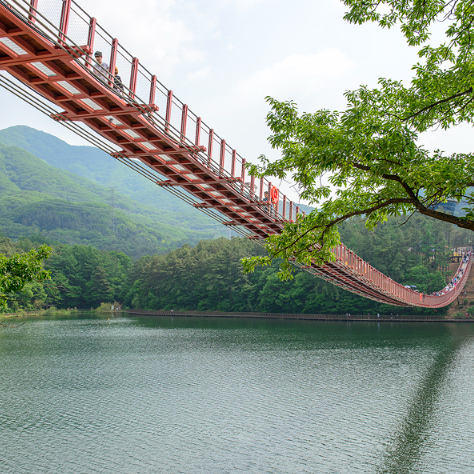
- Product image
Everyday except Monday
No Shopping Tour / DMZ including 3rd Invasion Tunnel / Mt.Gamaksan Suspension Bridge
This item has been added to your cart.
Should I order it along with the items in my shopping cart?
Must-Read Before you Book
■ Tour Type : Private (2 pax ~ 6 pax)
■ Booking Due : 2 day before 7 AM
■ Why This product? Visit not only DMZ and also Suspension Bridge where to see beautiful scenery from the top
■ Schedule : Everyday except Monday
■ Hotel pick up Time : 07:30 AM from your hotel located in Seoul
■ What to Bring? All of participants must bring valid passport to access DMZ on Tour Date
■ Inclusion & Exclusion
Tour Preview
■DMZ (Demilitarized Zone) 3rd Invasion Tunnel with Monorail Course
One of thrilling tunnel as close to 1.95 meters high, 2.1 meters wide and 1,635 meters long. It was thought to be more threatening as an invasion tool than the 1st and 2nd Tunnels. Located only 4km away from Imjingak toward the southwest and 3.5km from the Tongilchon area, it is accessible by car in about 45 minutes.
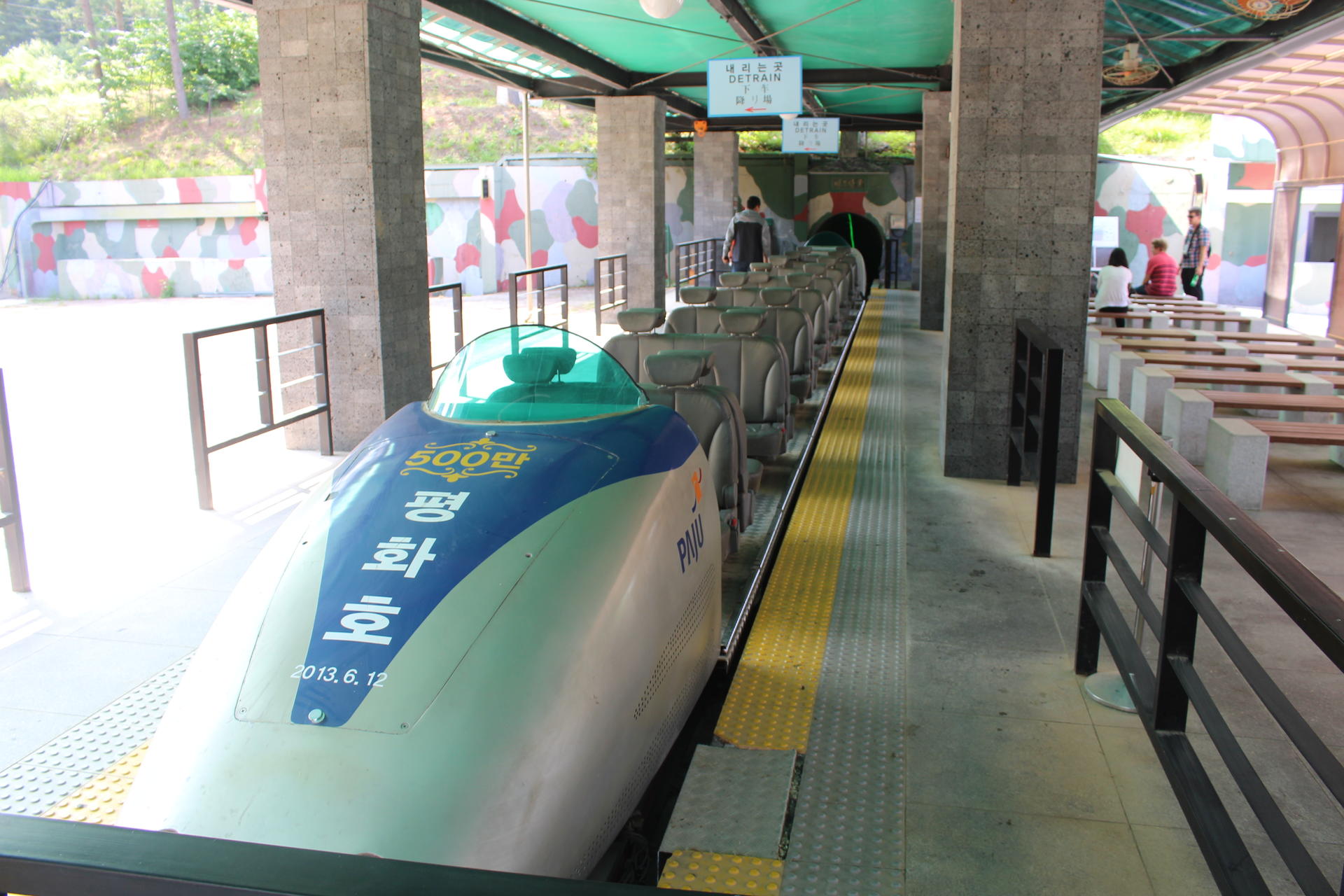
■ DMZ Theater

■ Dorasan Station (It is Closed for now for renewal by military/Korean government )
A railway station on the Gyeongui Line, is the northernmost stop on South Korea's railway line. Located 56 km from Seoul and 205 km from Pyeongyang

■ Dora Observatory
It's the northern-most point of the western front, and offers the chance to see Gaeseong Industrial Complex and Songhaksan Mountain in a single view.
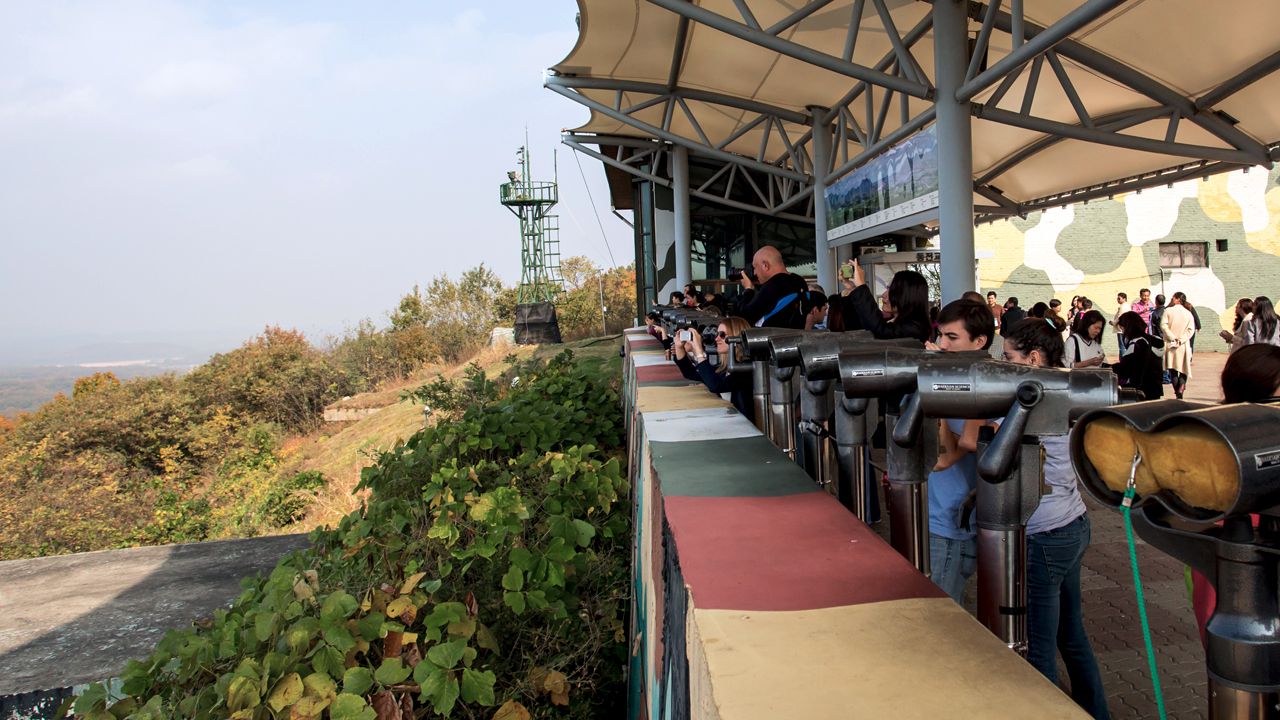
■ Mangbaedan Altar
It's place for 10 million South Korean people separated from their families in North Korea. They perform ancestral rites at Korea's big holidays such as New Year or Korea Thanks giving day 'Chuseok'

■ Bridge of Freedom
This is where South Koreans crossed the bridge when they came back to their mother country from North Korea after the signing of the Armistice
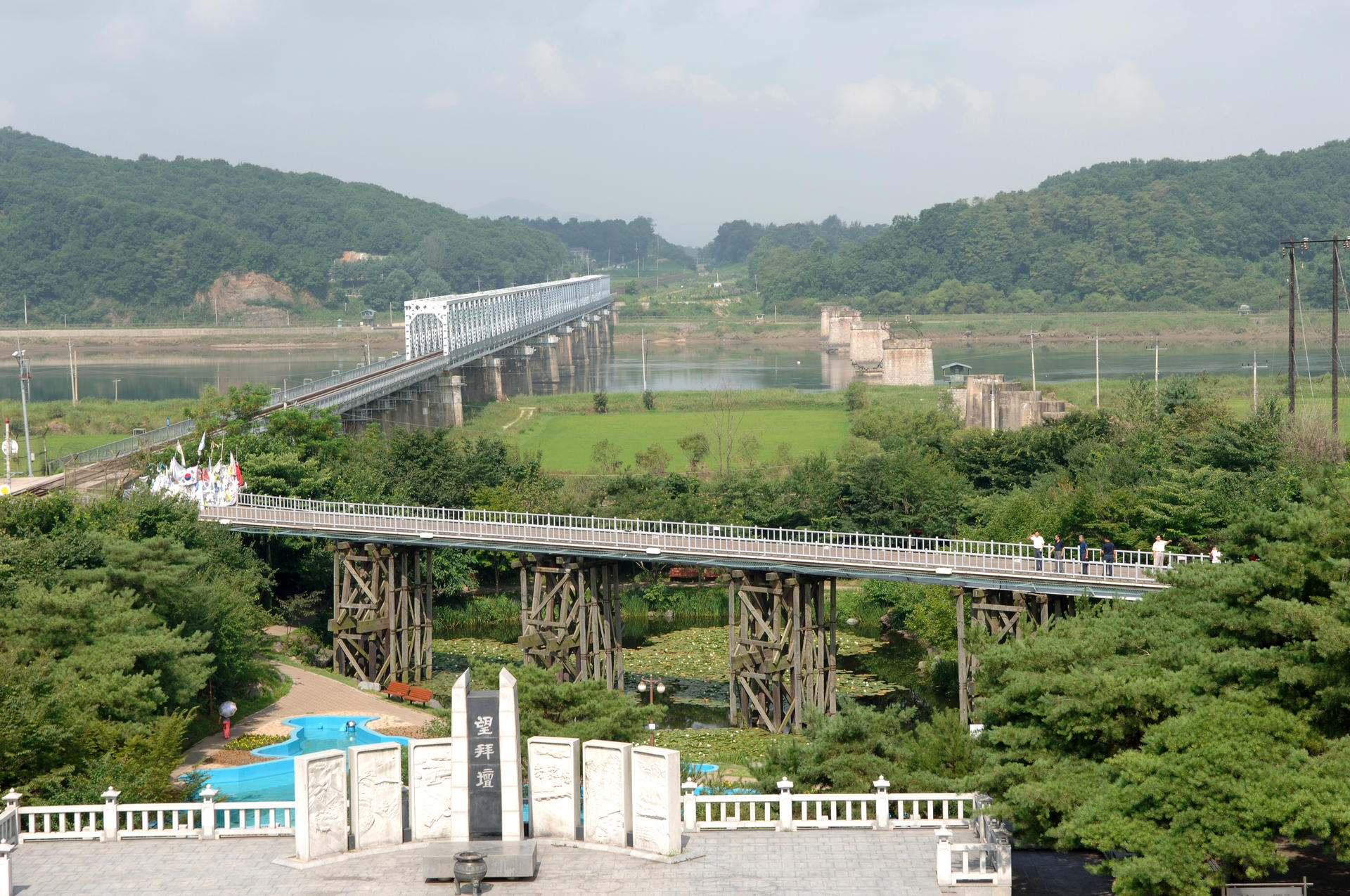
■ Steam Locomotive ruined during the Korean War

■ Nuri Peace Park
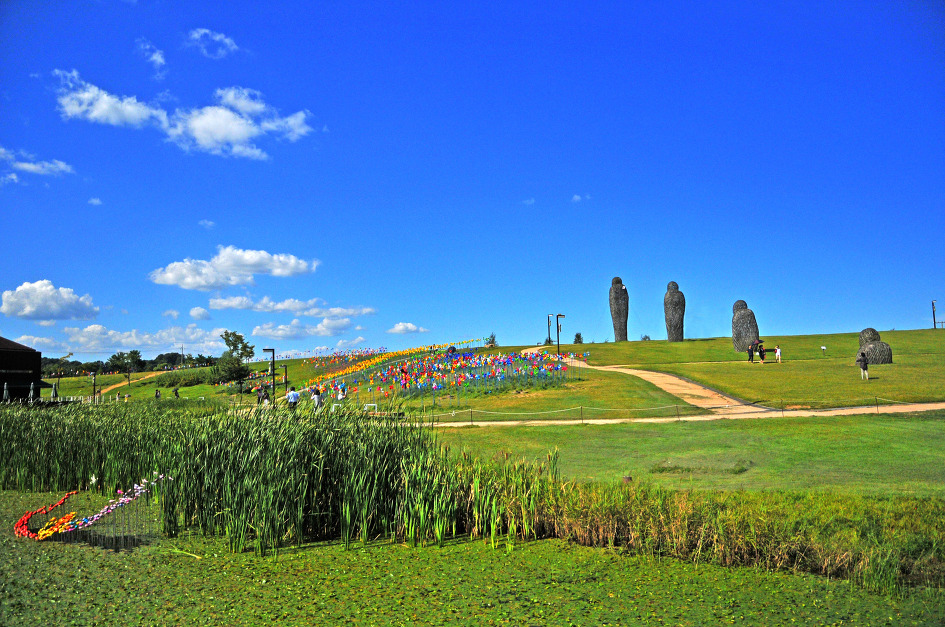
■ [Option 1] Mt.Gamaksan Suspension Bridge
This is one of the longest suspension bridge of Korea with 180 meter length. Around 15~20 min walking to the top, you will reach to the bridge offering great view point.

■ [Option 2] Majang Lake Suspension Bridge
This is where the Allied Forces fought a fierce battle in the Korean War.Many Allied soldiers lost and sacrificed their valuable lives here during the Korean War. In April 1951, there was a fierce battle to build a defense line (delta defense line) to protect Seoul against Communism Army
May 1951, where there was a battle to advance the Kansas Line.
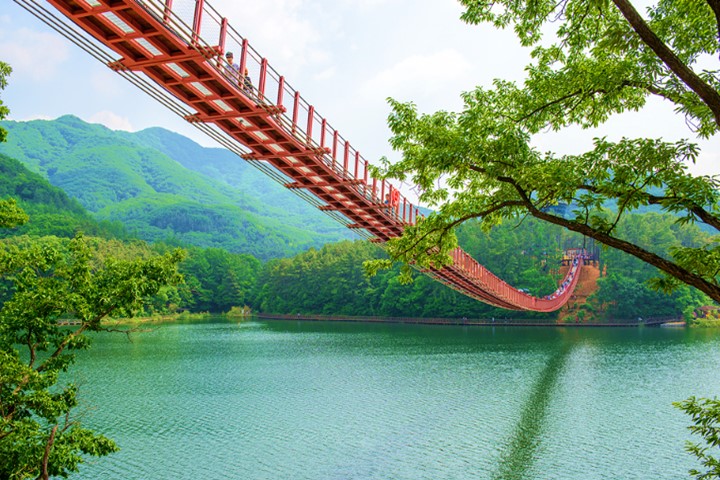
■Before you go*
• A current valid passport is required on the day of travel
• This is Private tour. Private tour guide and private vehicle is provided. However on DMZ, all customers are required to take designated group bus following Korean Military no matter your group type (private/Less than 30 people group). Your private tour guide will escort you all the time.
• DMZ is military area and can be closed suddenly without any notice on the day on site. If it happens, alternative tour will be provided. And no refunds.
• This is DMZ tour not JSA.
• The tour includes hotel pick up from ONLY Seoul area.
• Not recommended for participants with back problems
■If you have any inquiry or concerns, please contact us (
+82 10 8761 3248 OR +82 10 7537 8290). You can talk to us by Whatsapp as well.
▶Refund & Cancellation Policy -Full refund : 24 hours before departure time
▶Infant Policy
- Infants under 24 months are free of charge with no seats but parents' lap. Please inform us in advance it.
▶All inquiries regarding tours
Please send Facebook message, email([email protected]) call/message/whatsapp/LINE/KakoTalk to us ( +82-10-87613248, +82-10-7537-8290)
You might be interested in this!
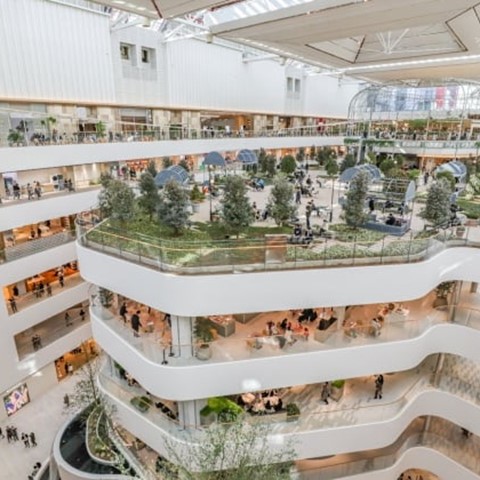
DIY Seoul Private Tour: Select 4 places you want to go
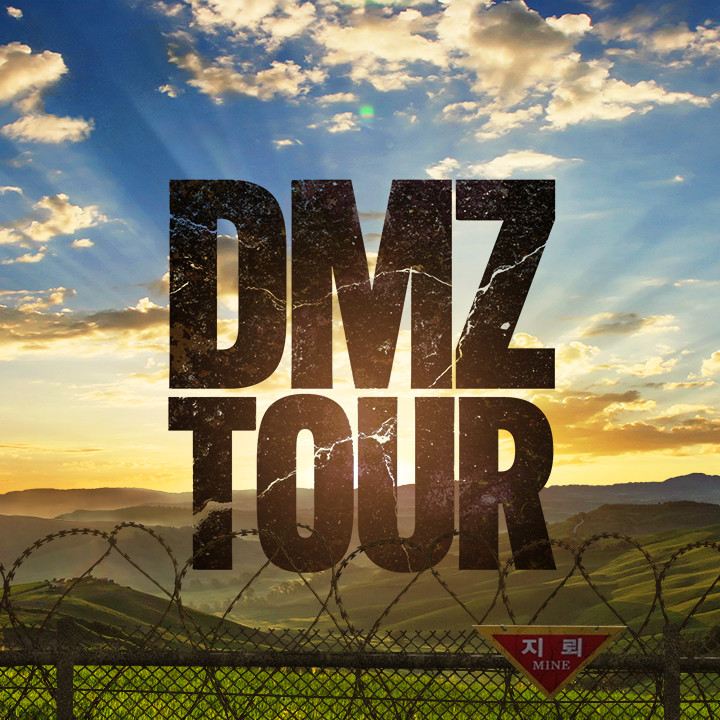
Half-day DMZ Essential Tour from Seoul
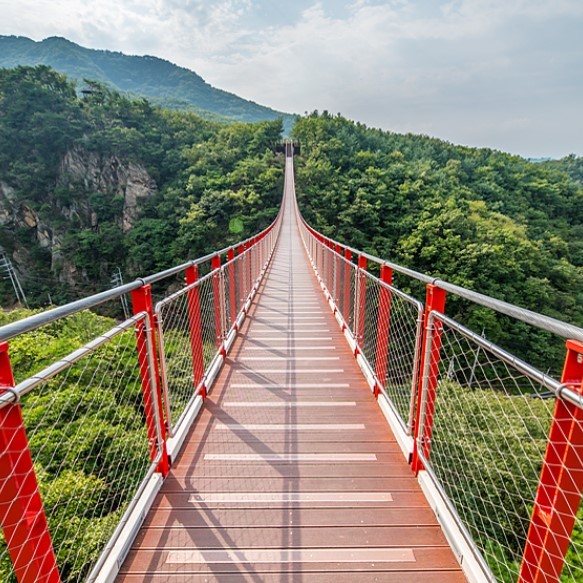
DMZ + Mt.Gamaksan Suspension Bridge One day tour from Seoul
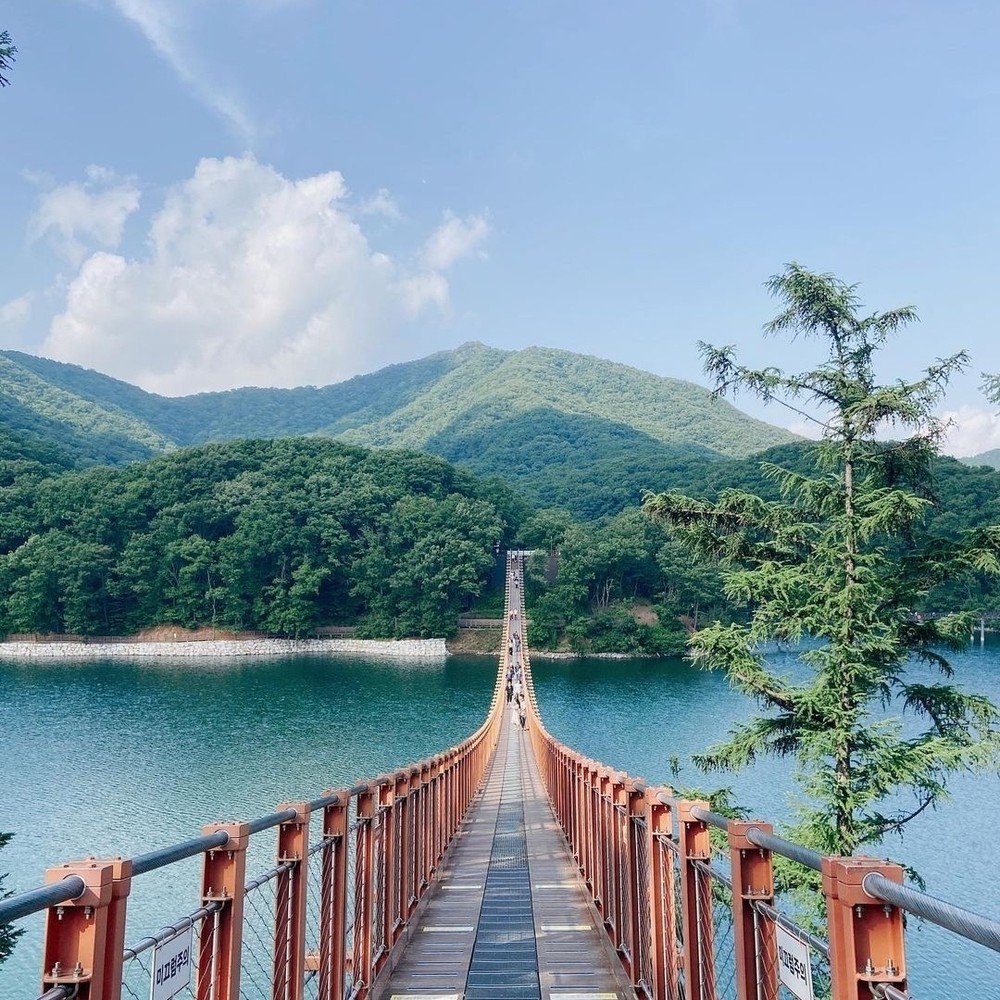
DMZ + Lake Majang Suspension Bridge One Day Tour from Seoul

Private DMZ Peace Tour: 3rd Invasion Tunnel(Monorail) and Suspension Bridge
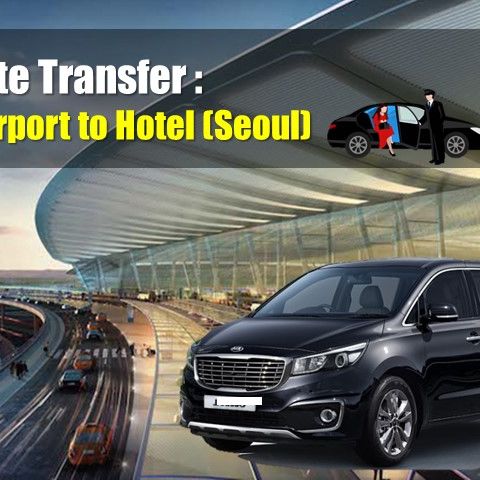
[Private] Incheon Airport Transfer
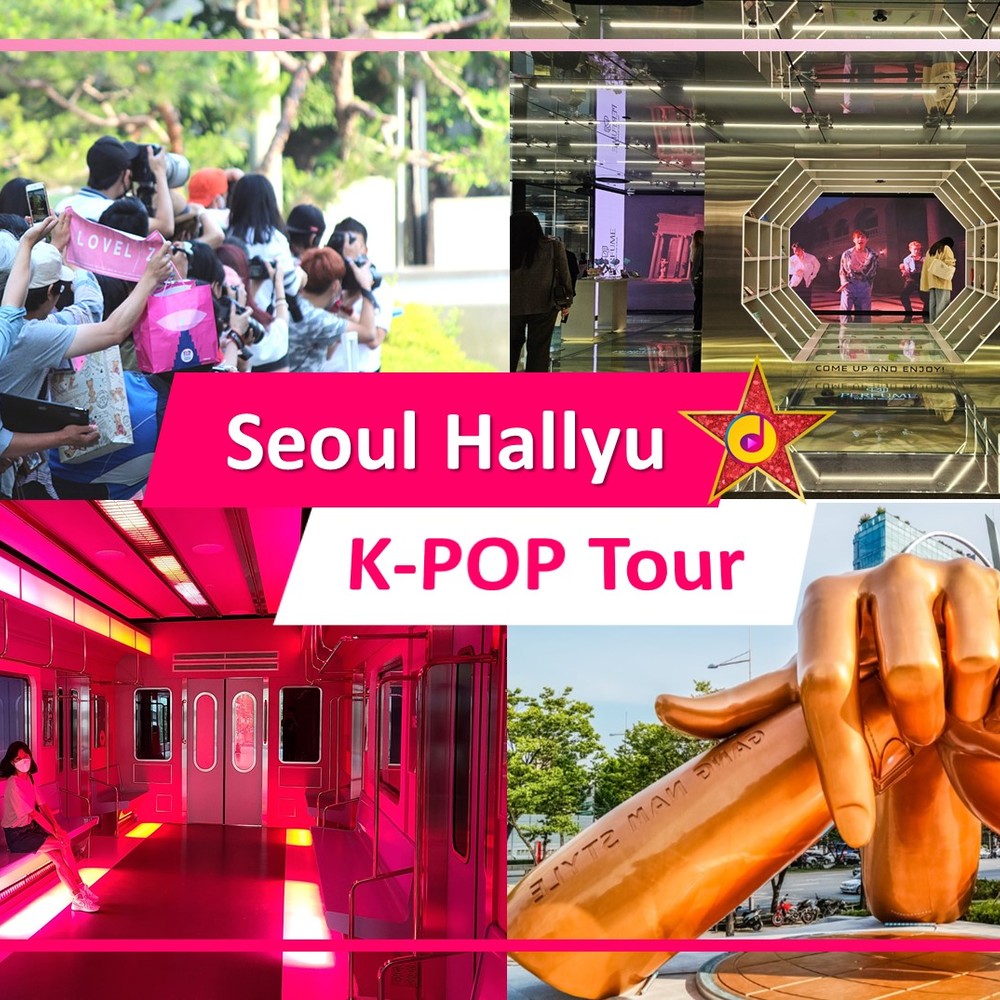
[Friday only] Seoul K-pop Tour
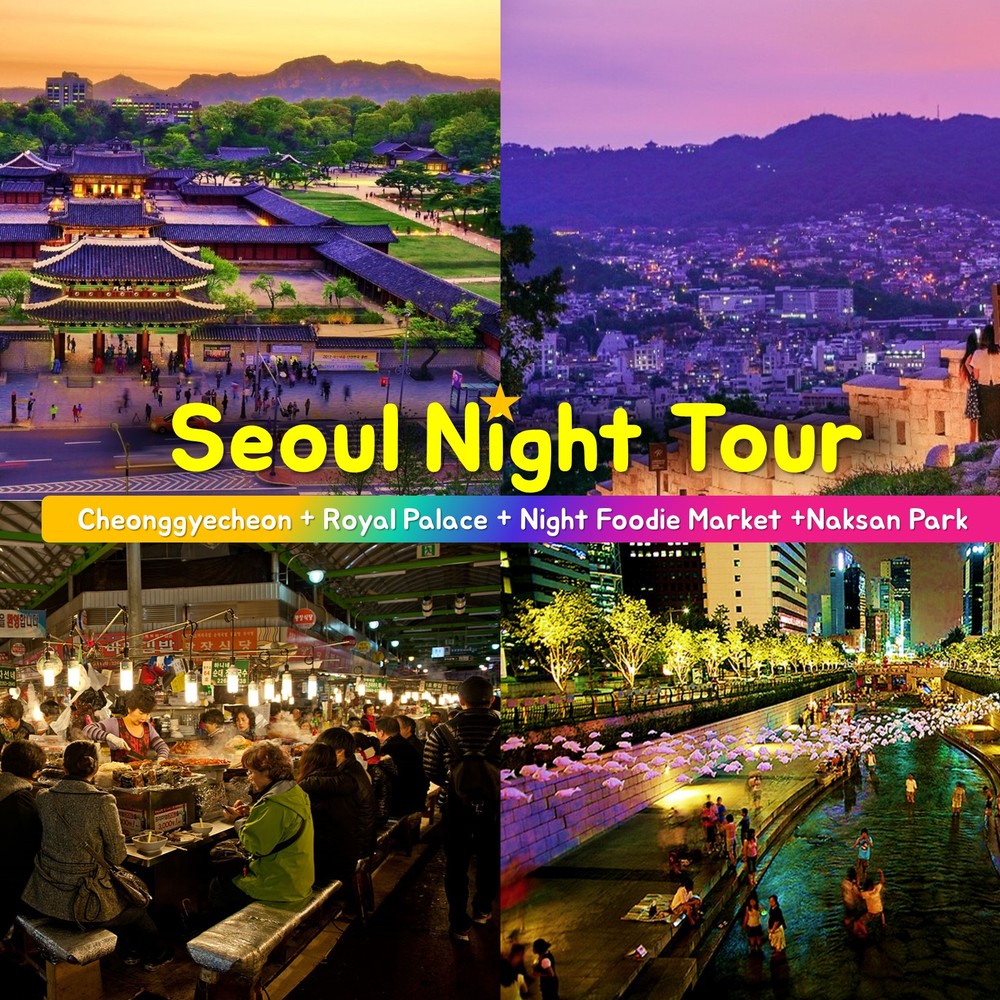
[WED &SAT] Seoul Night Tour
[DMZ PEACE TOUR] Tracing Peace through remains of the Korean War
On July 9th – 11th, members of Jeju Dark Tours travelled to Gangwon Province to join DMZ Peace Tour organized by Lee Kichan, a founder of Gangwon Peace Tour. It was especially meaningful trip since this year marks the 70th anniversary of the Korean War.
During this trip, we had a unique opportunity to explore DMZ in Yanggu-gun. Unlike DMZ in Paju, this place is not a famous tourist trail and it will not be seen often in travel brochures. However, the experience was remarkably interesting. We have been greeted by a local guide who requested us to do short stretching before the hiking. Then he took us up the curvy trail in a lush forest to oversee a beautiful bowl-shaped Yanggu Valley. This place has its original name ‘Hae-ahn myeon’ but since it looks like a ‘punch bowl’, it is more well known for its English name.
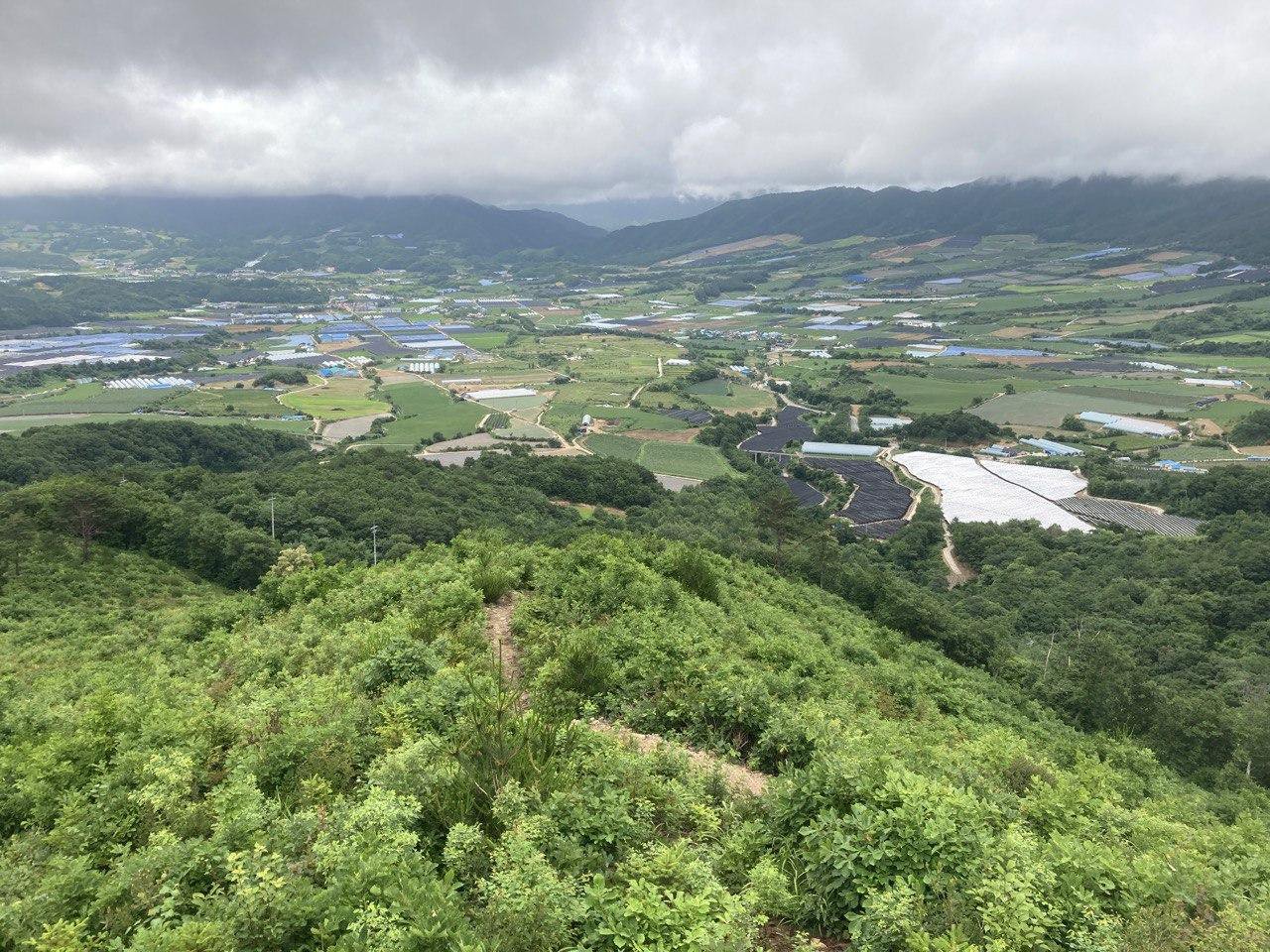
Even though the weather was rainy and slightly gloomy, the beauty of surrounding nature was breathtaking. However, the tragic history of the Korean War and several battles that took place here would not leave our mind. Currently, it is a peaceful village with a population highly engaged in agricultural works growing fruits and vegetables and making delicious food made of locally grown products.
Our next stop was Yanggu Unification Hall. We were welcomed by a 6-meters tall statue of Greeting Man. This statue was erected in 2012 and symbolizes peace, hope for the end of the Korean War and the Unification.
One of the highly recommended places to visit on-site is War Memorial Hall which was built in 2000 to commemorate the memory of those who fought during the Korean War. Indoor walls of the hall are covered with heartbreaking pictures from the Korean War, with installations of real weaponry used during the war. You will find a glass floor with bullets and weaponry beneath it, the remnants of the war. At the same time, it portraits North Korea as a pure enemy and even it used to have a computer game that children can shoot North Korean soldiers on the screen with a toy gun. This machine was removed last year but still, its remains were there. Since 70-year armistice creates unnecessary tension on the Korean peninsula, it would be nicer if we could see ways to bring peace on the region.
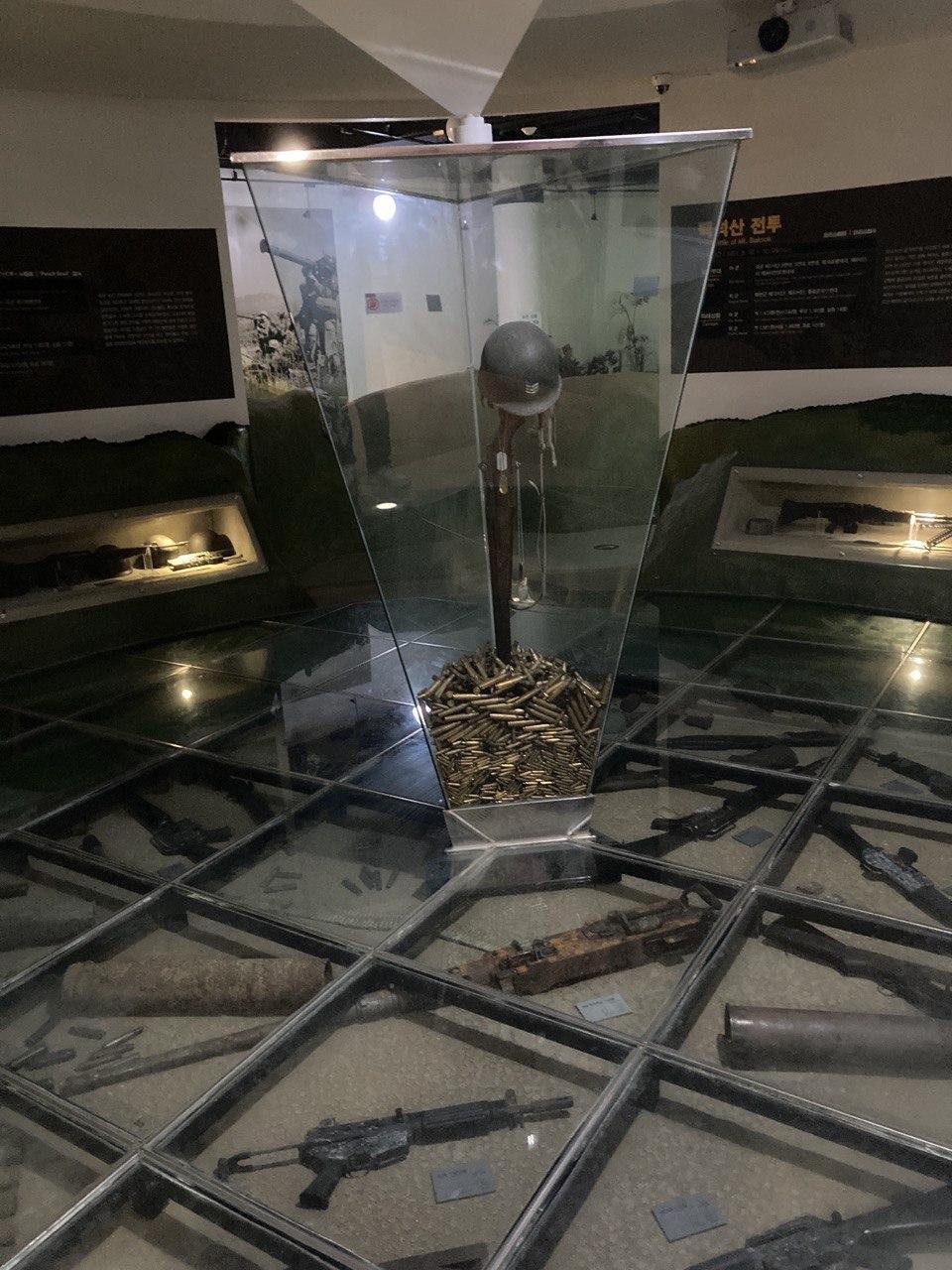
Next, we arrived at the Peace Dam in Hwacheon-gun. This Dam was known to be built to prevent potential flooding attack by North Korea. The construction of the dam started in 1986 and was completed by 1989. However, the dam does not properly perform its role and water storage level was very low which brings doubt that it is actually built to prevent potential flooding attack. The Korean government started reconstructing the Dam in 2002 and ended by 2005. The Peace Dam is 601 meters wide, 125 meters tall, and capable of holding 2.61 billion tons of water. Due to its location in a scenic area, the dam is currently a tourist attraction. There is a sky walk as well as various recreation areas for vacationers.
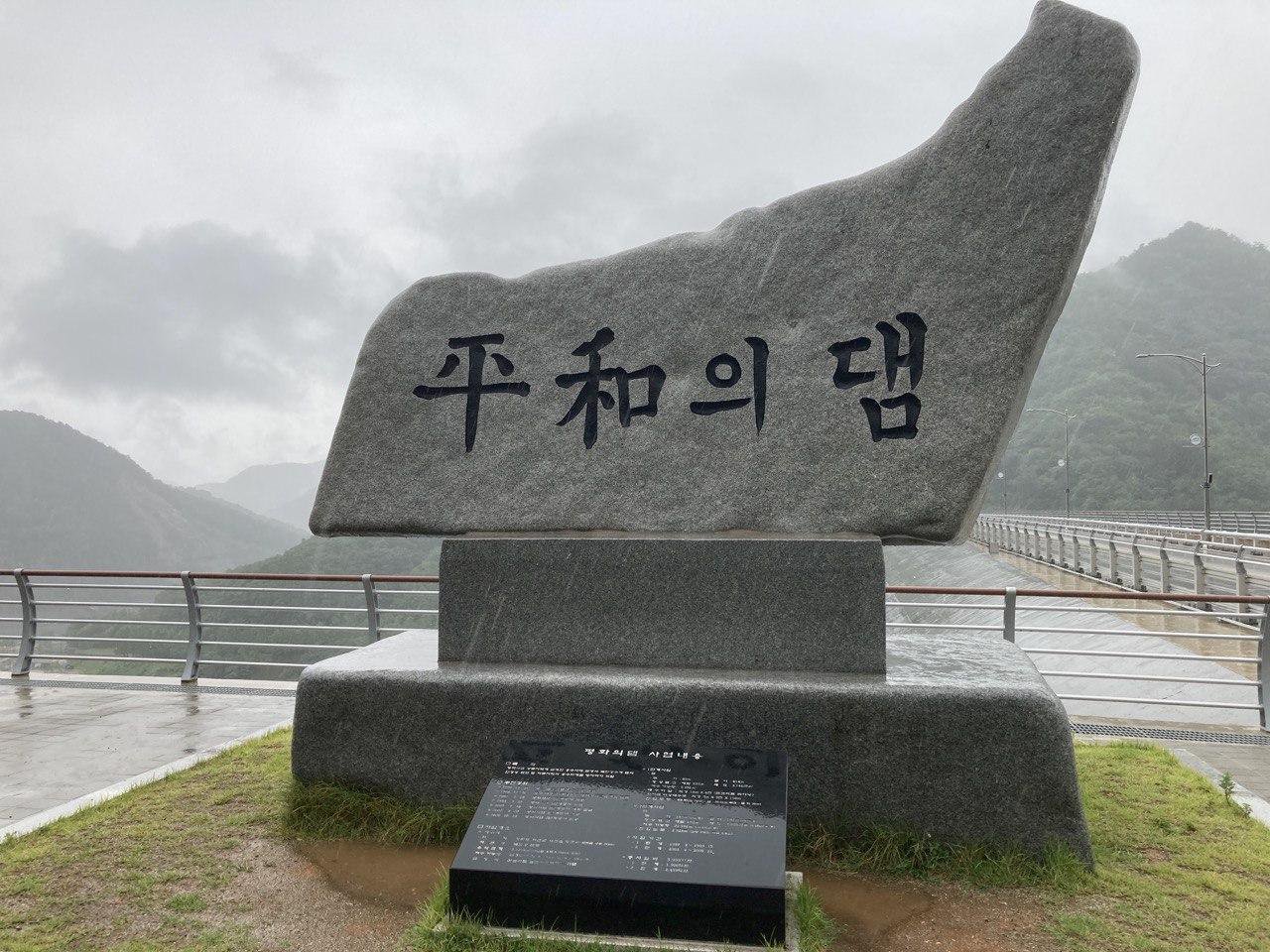
And the final destination of Jeju Dark Tours members was to the Vietnam War Memorial Museum in Hwacheon-gun. We could go back through history and observe the hardships that Vietnamese people had to undergo during the war and learn about the role of the Korean army in the Vietnamese War. One of the most memorable moments here was going through Cu Chi Underground Tunnel Exhibition Hall with human sculptures depicting the daily life of Vietnamese people during the Vietnamese war. However, the exhibition does not show other stories by Korean soldiers during the Vietnam War. (The Forgotten History of South Korean Massacres in Vietnam)
This trip was historically enriching and by the end of it, participants were even more resolute in their believes that humanity should altogether work towards the promotion of global peace by remembering and respecting the past.
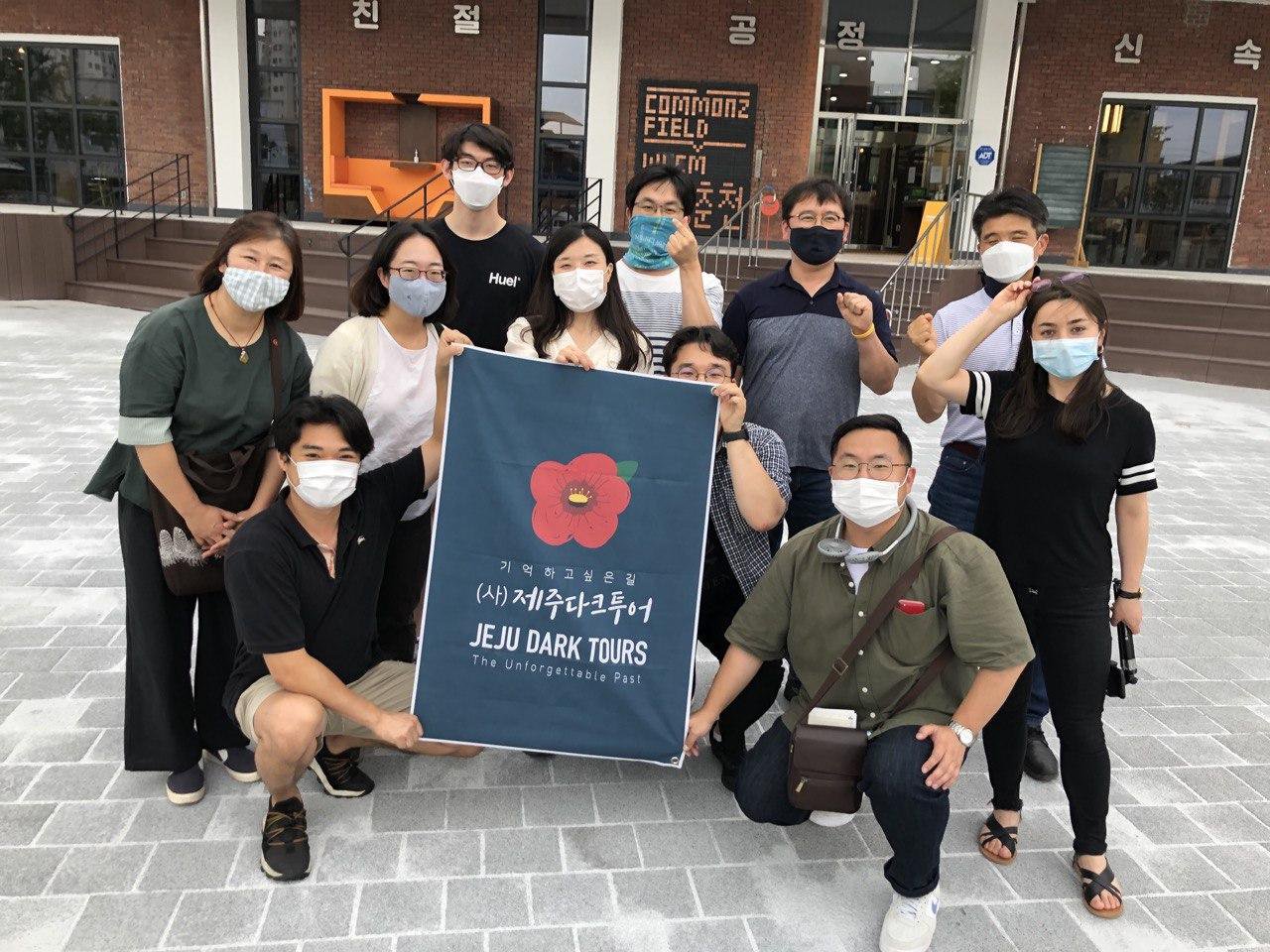
Related Articles
Myanmar's military must withdraw its execution approval and release all detained citizens, following footseps of seodal oreoum victims, [joint statement] the third rohingya genocide remembrance day.
Site Search

A Glimpse into the Frigid Heart of the Korean Divide: Inside the DMZ
O n the tense and volatile Korean peninsula, where the ghosts of a war that ended without peace linger, lies a stretch of land rife with political symbolism and fraught with an eerie stillness—the Demilitarized Zone (DMZ). This narrow strip of land cuts across the Korean peninsula and serves as a buffer between North and South Korea.
In December, Kim said his army should “thoroughly annihilate” South Korea and the United States, if provoked, the Associated Press reported.
The armistice agreement signed in 1953 brought a temporary halt to the hostilities of the Korean War, but the shadow of conflict has remained, with both North and South Korea maintaining a heavy military presence along the border. The DMZ, extending 148 miles in length and 2.5 miles.
Despite the palpable tension, this heavily fortified border is paradoxically also a tourist destination. From approximately 30 miles north of Seoul, visitors embark on organized tours to the Joint Security Area, known as Panmunjom or Truce Village. In 2019, CNN reported that 1.2 million people visit the site each year, citing figures from the Korea Tourism Organization.
“On July 27, 1953, in the small building approximately 1000 meters to the front of this marker, representatives of the United Nationals Command, the Korean People’s Army, and the Chinese Peoples Volunteers signed a Military Armistice agreement that brought the Korean War to a halt,” the plaque reads.
The plaque adds that the Republic of Korea lost 150,000 soldiers and the United Nations Command suffered 40,000 casualties.
Under the watchful eyes of soldiers, tourists may step around a conference table inside a blue building straddling the line and momentarily stand in both countries. Photography is restricted, gestures towards North Korean soldiers are prohibited, and the atmosphere is heavy with the gravity of history.
The so-called “Peace Village,” visible through binoculars from the South’s Goseong Unification Observatory Tower, stands empty—its buildings likely hollow shells erected to entice defectors.
Relevant articles:
– See inside the Demilitarized Zone, the heavily guarded border between North Korea and South Korea , Business Insider
– See inside the Demilitarized Zone, the heavily guarded border between North Korea and South Korea , Yahoo
– Demilitarized zone | Korean Peninsula History, Map, & Significance , Britannica
– North Korean border zone tour , Audley Travel

635th Anti-Aircraft Missile Regiment
635-й зенитно-ракетный полк
Military Unit: 86646
Activated 1953 in Stepanshchino, Moscow Oblast - initially as the 1945th Anti-Aircraft Artillery Regiment for Special Use and from 1955 as the 635th Anti-Aircraft Missile Regiment for Special Use.
1953 to 1984 equipped with 60 S-25 (SA-1) launchers:
- Launch area: 55 15 43N, 38 32 13E (US designation: Moscow SAM site E14-1)
- Support area: 55 16 50N, 38 32 28E
- Guidance area: 55 16 31N, 38 30 38E
1984 converted to the S-300PT (SA-10) with three independent battalions:
- 1st independent Anti-Aircraft Missile Battalion (Bessonovo, Moscow Oblast) - 55 09 34N, 38 22 26E
- 2nd independent Anti-Aircraft Missile Battalion and HQ (Stepanshchino, Moscow Oblast) - 55 15 31N, 38 32 23E
- 3rd independent Anti-Aircraft Missile Battalion (Shcherbovo, Moscow Oblast) - 55 22 32N, 38 43 33E
Disbanded 1.5.98.
Subordination:
- 1st Special Air Defence Corps , 1953 - 1.6.88
- 86th Air Defence Division , 1.6.88 - 1.10.94
- 86th Air Defence Brigade , 1.10.94 - 1.10.95
- 86th Air Defence Division , 1.10.95 - 1.5.98
- Yekaterinburg
- Novosibirsk
- Vladivostok

- Tours to Russia
- Practicalities
- Russia in Lists
Rusmania • Deep into Russia
Out of the Centre
Savvino-storozhevsky monastery and museum.

Zvenigorod's most famous sight is the Savvino-Storozhevsky Monastery, which was founded in 1398 by the monk Savva from the Troitse-Sergieva Lavra, at the invitation and with the support of Prince Yury Dmitrievich of Zvenigorod. Savva was later canonised as St Sabbas (Savva) of Storozhev. The monastery late flourished under the reign of Tsar Alexis, who chose the monastery as his family church and often went on pilgrimage there and made lots of donations to it. Most of the monastery’s buildings date from this time. The monastery is heavily fortified with thick walls and six towers, the most impressive of which is the Krasny Tower which also serves as the eastern entrance. The monastery was closed in 1918 and only reopened in 1995. In 1998 Patriarch Alexius II took part in a service to return the relics of St Sabbas to the monastery. Today the monastery has the status of a stauropegic monastery, which is second in status to a lavra. In addition to being a working monastery, it also holds the Zvenigorod Historical, Architectural and Art Museum.
Belfry and Neighbouring Churches

Located near the main entrance is the monastery's belfry which is perhaps the calling card of the monastery due to its uniqueness. It was built in the 1650s and the St Sergius of Radonezh’s Church was opened on the middle tier in the mid-17th century, although it was originally dedicated to the Trinity. The belfry's 35-tonne Great Bladgovestny Bell fell in 1941 and was only restored and returned in 2003. Attached to the belfry is a large refectory and the Transfiguration Church, both of which were built on the orders of Tsar Alexis in the 1650s.

To the left of the belfry is another, smaller, refectory which is attached to the Trinity Gate-Church, which was also constructed in the 1650s on the orders of Tsar Alexis who made it his own family church. The church is elaborately decorated with colourful trims and underneath the archway is a beautiful 19th century fresco.
Nativity of Virgin Mary Cathedral

The Nativity of Virgin Mary Cathedral is the oldest building in the monastery and among the oldest buildings in the Moscow Region. It was built between 1404 and 1405 during the lifetime of St Sabbas and using the funds of Prince Yury of Zvenigorod. The white-stone cathedral is a standard four-pillar design with a single golden dome. After the death of St Sabbas he was interred in the cathedral and a new altar dedicated to him was added.

Under the reign of Tsar Alexis the cathedral was decorated with frescoes by Stepan Ryazanets, some of which remain today. Tsar Alexis also presented the cathedral with a five-tier iconostasis, the top row of icons have been preserved.
Tsaritsa's Chambers

The Nativity of Virgin Mary Cathedral is located between the Tsaritsa's Chambers of the left and the Palace of Tsar Alexis on the right. The Tsaritsa's Chambers were built in the mid-17th century for the wife of Tsar Alexey - Tsaritsa Maria Ilinichna Miloskavskaya. The design of the building is influenced by the ancient Russian architectural style. Is prettier than the Tsar's chambers opposite, being red in colour with elaborately decorated window frames and entrance.

At present the Tsaritsa's Chambers houses the Zvenigorod Historical, Architectural and Art Museum. Among its displays is an accurate recreation of the interior of a noble lady's chambers including furniture, decorations and a decorated tiled oven, and an exhibition on the history of Zvenigorod and the monastery.
Palace of Tsar Alexis

The Palace of Tsar Alexis was built in the 1650s and is now one of the best surviving examples of non-religious architecture of that era. It was built especially for Tsar Alexis who often visited the monastery on religious pilgrimages. Its most striking feature is its pretty row of nine chimney spouts which resemble towers.

Plan your next trip to Russia
Ready-to-book tours.
Your holiday in Russia starts here. Choose and book your tour to Russia.
REQUEST A CUSTOMISED TRIP
Looking for something unique? Create the trip of your dreams with the help of our experts.

IMAGES
VIDEO
COMMENTS
This 6-7 hour tour option is available through multiple tour operators, so you will see multiple booking options for each OTA. This tour includes pick-up and drop-off from three locations in Seoul, a short visit to Imjingak Park, and the military-run DMZ tour. Some tours include a meetup with a North Korean defector.
The Korean DMZ Peace Train is a tourist train that leaves Seoul and goes to the DMZ. KORAIL runs this train route. There are three routes that the train takes: the Dorasan Security Tour, the Yeoncheon Dreaming Tour, and the Cheorwon Security Tour. Each tour package is a one-day tour that goes both ways.
DMZ Peace Train - Dorasan Security Tour. Operating days: Wednesday-Sunday, once a day / No trains Monday-Tuesday Tour schedule: Depart from Yongsan Station (10:08) - Seoul Station (10:15) - Arrive at Imjingang Station (11:24) - Complete identity check (11:32) - Arrive at Dorasan Station and board connecting bus (11:43) - Dorasan Peace Park (12:10) - Lunch break at Tongilchon ...
The DMZ area is located 60 km from Seoul and can be visited with the DMZ train or a private guided or group tour. The DMZ peace train. DMZ peace train service has not yet resumed post-COVID-19. The cheapest way to visit the DMZ is with the DMZ peace train. The DMZ peace train runs from Seoul to Dorasan station from Tuesdays to Sundays. Just ...
Immerse yourself in the history and highlights of the DMZ on a full-day group tour from Seoul. A well-paced itinerary includes visits to the demilitarized zone's most significant locations, including Dora Observatory, Dorasan Station, Imjingak Park, and the Third Tunnel. This excursion also takes you to the often-missed Gamaksan Chulleong Suspension Bridge. Every step of the way, you'll enjoy ...
In an effort to avoid spending two weeks only focused on shopping and eating, we booked the DMZ Peace Tour on Klook for about $53 USD. Advertisement. We boarded the tour bus heading for Paju, a ...
The Private DMZ Peace Tour offers travelers an immersive experience in the Korean Demilitarized Zone (DMZ). With a knowledgeable guide by their side,
DMZ Peace Tour. This private guided tour will allow you to explore the Korean Demilitarized Zone or DMZ. Your guide will take you to Dorasan Station, the northernmost station in South Korea that runs along a rail line that used to connect the two countries. You'll also visit the Third Tunnel of Aggression, one of the tunnels under the border ...
Private DMZ Spy Commando Invasion Route & 2nd tunnel tour. 106. from $250.00. Price varies by group size. Seoul, South Korea. Seoul Private Tours by Locals: 100% Personalized, See the City Unscripted. 3. from $204.82. Price varies by group size.
Enjoy the undivided attention of your private guide on a 10-hour tour to the DMZ. Forget the headache large groups and discomfort of tour buses and relax in private round-trip transportation from your Seoul hotel. There's no need to fuss over foreign language menus as lunch is provided at a local restaurant. In addition to the usual attractions, the comprehensive itinerary also includes ...
The Demilitarized Zone Tour. The Demilitarized Zone (DMZ) is a weapons-free buffer zone between North and South Korea. The area was established on July 27, 1953 when the Armistice Agreement was signed during the Korean War, and includes a 2 kilometer-wide stretch of land on both north and south of the line.
Visit three different places within the DMZ. First, arrive at The 3rd Infiltration Tunnel by walking (or monorail if private option is selected) and see a tunnel dug by North Koreans to invade South Korea. Next, explore Dorasan Observatory, the northernmost observatory of North Korean territory. And then visit Unfication village.
Private DMZ Peace Tour: 3rd Invasion Tunnel(Monorail) and Suspension Bridge cancellation policy: For a full refund, cancel at least 24 hours in advance of the start date of the experience. Discover and book Private DMZ Peace Tour: 3rd Invasion Tunnel(Monorail) and Suspension Bridge on Tripadvisor
The most safe DMZ Tour with reliable company having no accident at all since of 2018. Plus, this is NO-Shopping Tour.; Visit DMZ (3rd Invasion tunnel, Dora Observatory to see North Korea Territory, Unification Village and more) in Korea; DMZ + Suspension Bridge(Lake Majang or Mt. Gamaksan): The suspension bridge was a fierce battle field during Korean war .
Tour Preview DMZ (Demilitarized Zone) 3rd Invasion Tunnel with Monorail Course. One of thrilling tunnel as close to 1.95 meters high, 2.1 meters wide and 1,635 meters long.It was thought to be more threatening as an invasion tool than the 1st and 2nd Tunnels.
event Jul 11, 2020. On July 9th - 11th, members of Jeju Dark Tours travelled to Gangwon Province to join DMZ Peace Tour organized by Lee Kichan, a founder of Gangwon Peace Tour. It was especially meaningful trip since this year marks the 70th anniversary of the Korean War. During this trip, we had a unique opportunity to explore DMZ in Yanggu ...
Enjoy the undivided attention of your private guide on a 10-hour tour to the DMZ. Forget the headache large groups and discomfort of tour buses and relax in private round-trip transportation from your Seoul hotel. In addition to the usual attractions, the comprehensive itinerary also includes visits to the third infiltration tunnel, Dora Observatory, and Dorasan Station.
O n the tense and volatile Korean peninsula, where the ghosts of a war that ended without peace linger, lies a stretch of land rife with political symbolism and fraught with an eerie stillness ...
DMZ PEACE TRAIN MUSIC FESTIVAL
635th Anti-Aircraft Missile Regiment. 635-й зенитно-ракетный полк. Military Unit: 86646. Activated 1953 in Stepanshchino, Moscow Oblast - initially as the 1945th Anti-Aircraft Artillery Regiment for Special Use and from 1955 as the 635th Anti-Aircraft Missile Regiment for Special Use. 1953 to 1984 equipped with 60 S-25 (SA-1 ...
In 1938, it was granted town status. [citation needed]Administrative and municipal status. Within the framework of administrative divisions, it is incorporated as Elektrostal City Under Oblast Jurisdiction—an administrative unit with the status equal to that of the districts. As a municipal division, Elektrostal City Under Oblast Jurisdiction is incorporated as Elektrostal Urban Okrug.
Zvenigorod's most famous sight is the Savvino-Storozhevsky Monastery, which was founded in 1398 by the monk Savva from the Troitse-Sergieva Lavra, at the invitation and with the support of Prince Yury Dmitrievich of Zvenigorod. Savva was later canonised as St Sabbas (Savva) of Storozhev. The monastery late flourished under the reign of Tsar ...
Elektrostal. Elektrostal ( Russian: Электроста́ль) is a city in Moscow Oblast, Russia. It is 58 kilometers (36 mi) east of Moscow. As of 2010, 155,196 people lived there.